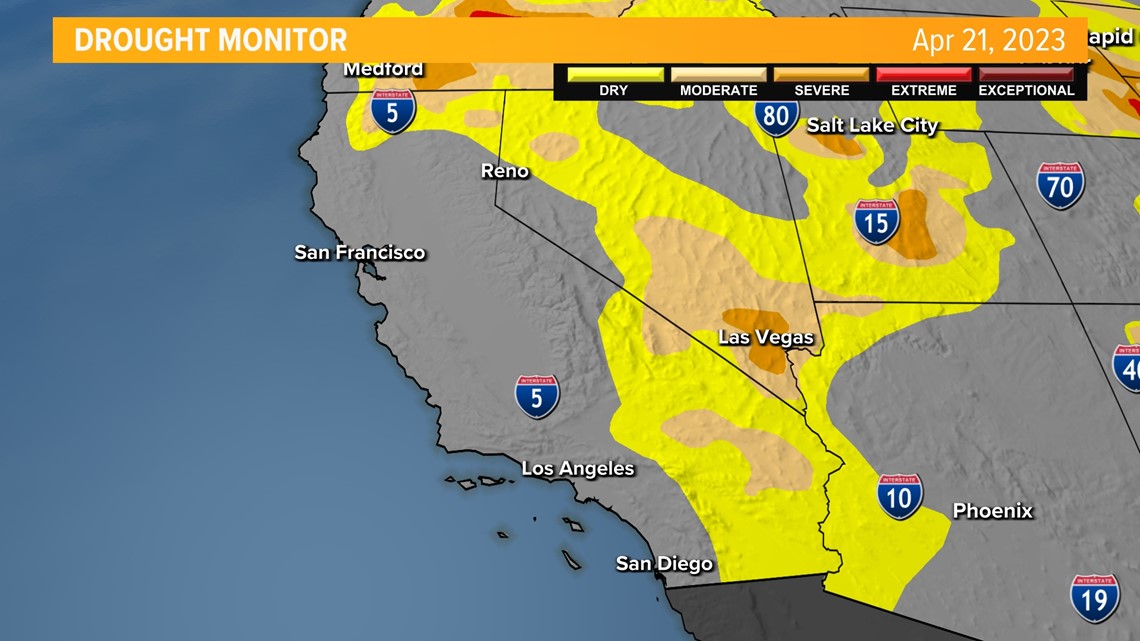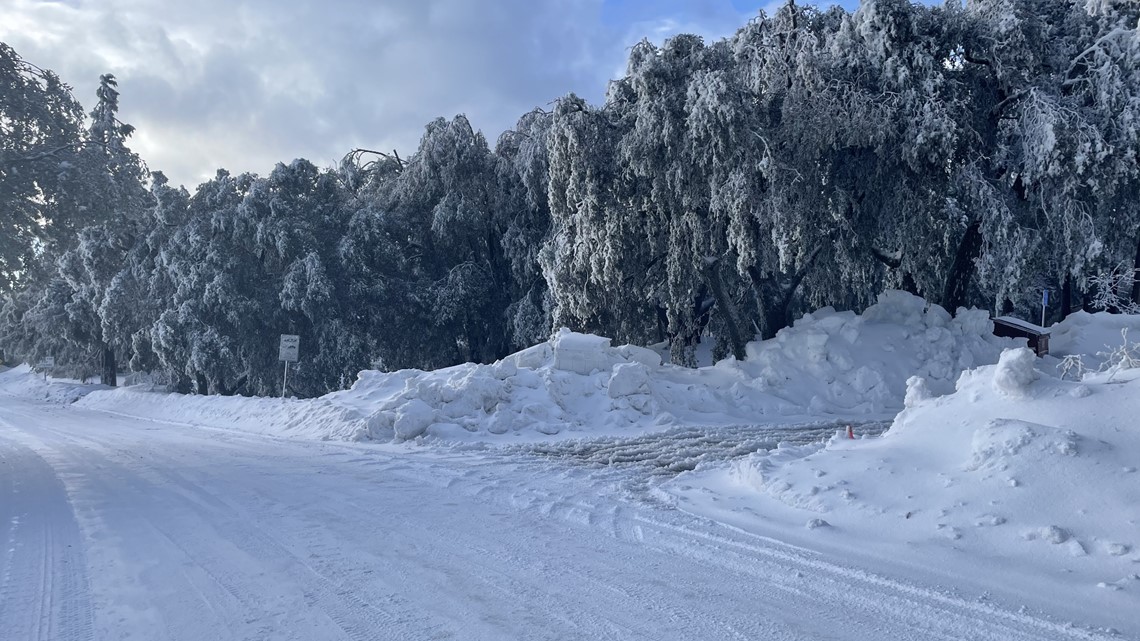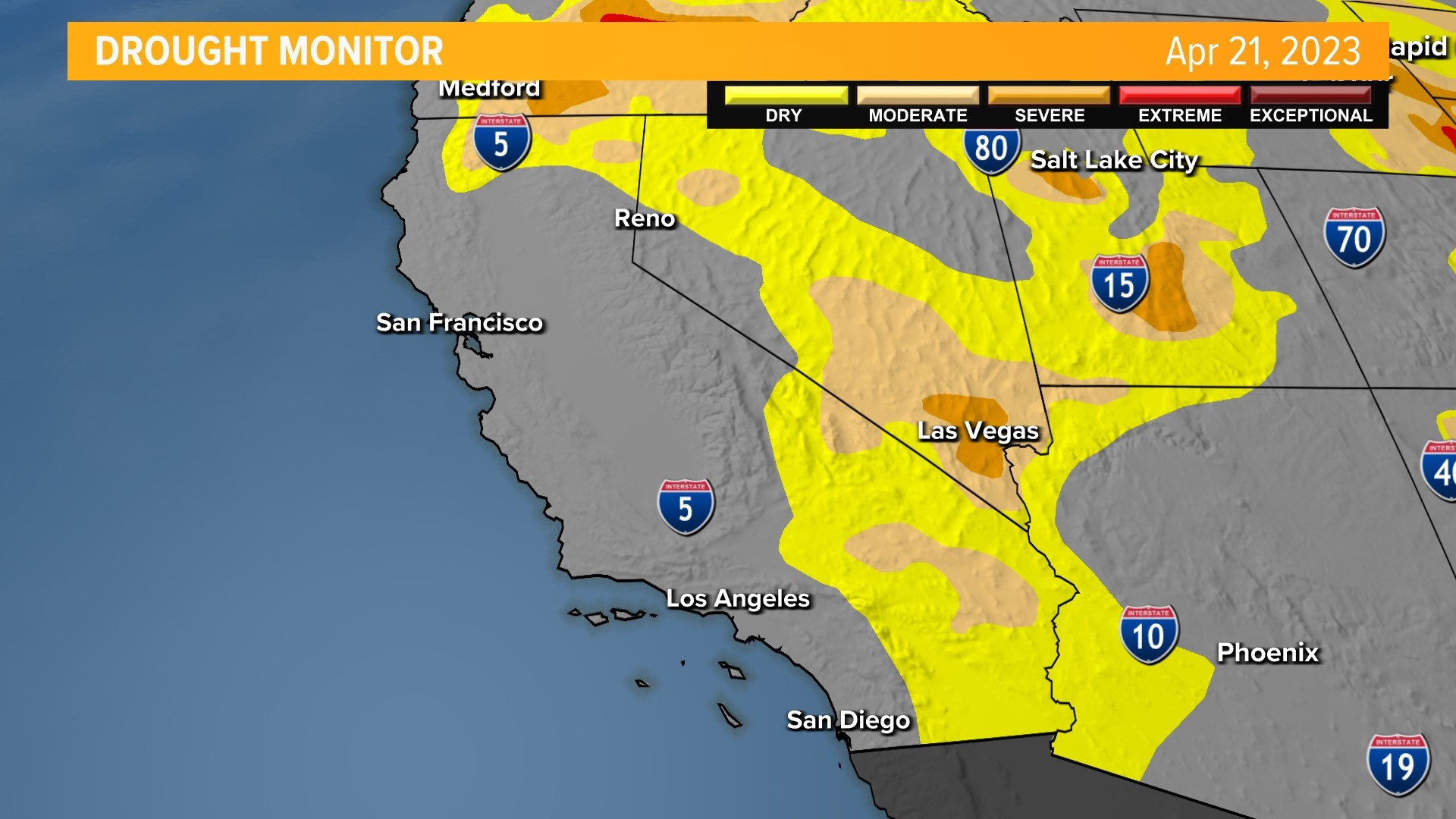SAN DIEGO — Over the last four months, storm after storm pounded the California coast – leading to dramatic changes in our water supply and drought conditions – including in San Diego. But many are asking whether it’s safe to say the drought is complete “over.”
The weekly published Drought Monitor shows that conditions significantly improved compared to last year.
Over 95% of the state was classified as under severe drought one year ago. Today, 0% is in that severe drought classification.
Beyond that, more than 65% of California is no longer under any drought classification – effectively erasing a years-long problem.
“I think it is safe to say that drought – when you look at it in terms of rain and snow, soil conditions, fire weather conditions, and water supply in California – drought is over,” Alex Tardy, a meteorologist with the National Weather Service in San Diego told CBS 8. “But when you look at what really drought is: a long-term deficit and a shortage in supplies, those shortages could be overused by farmers and us as residents. Those shortages could be weather related. You know, not enough rain, not enough snow. And those shortages could be a supply shortage, meaning we can’t store enough water. That latter one is the complicated one. That’s not over with.”


Our water year shows a surplus across most San Diego County cities – sometimes close to 150 to 200 percent of normal. We’ll need more powerful storms to come through the rest of the year to keep up the improvements and likely years of improvement across the nation to call the drought “over truly.”
“Places like LA were double their annual rainfall,” Tardy said. “Places like San Diego are approaching one and a half times their annual rainfall. So for the water year, which starts October 1, we’re talking about 150% to 200% of normal. So, almost two seasons into one.”
Experts said it’s complicated. They also encourage water conservation regardless of if we’re in or out of a drought. The amount of rain in the next several months of spring could also decide how intense our fire year is toward the summer and fall of this year, as all the greenery flourishing now will eventually die.
Beyond that, a decades-long drought in Colorado – where we get much of our water pumped in from (sometimes 50 percent of our water) – is still a huge cause for concern.
“I think the word drought might be slightly misleading,” Tardy added. “And maybe something that we have to change and rephrase better because in terms of rain, snow, soil conditions, and water supply, yes, drought is over. But in terms of long-term management and a multi-decade type of drought in Colorado water supply, no, that part is not over.”
The U.S. Drought Monitor is jointly produced by the National Drought Mitigation Center at the University of Nebraska-Lincoln, the United States Department of Agriculture, and the National Oceanic and Atmospheric Administration. Their weekly updates give a snapshot of what conditions are like on the ground. But they’re not a forecast for the future, meaning conditions can change, and past conditions don’t necessarily dictate what the future will look like.
The rain that pounded the west coast from late December through March also came fast enough to cause major flooding concerns. Across the mountains, Palomar Mountain recorded double their normal rain/snow. Adding to the supply over the mountains is crucial to preventing drought.
“Palomar mountain, a good example, it’s really important to get the water up in the mountains so that it can come down and be collected and stored,” Tardy said. “Especially the Sierra Nevada, but our local mountain, Palomar, is at 60 inches of rain. That’s two times normal.”


Watching the dramatic warm-up seen through mid-April, the concern about snowmelt flooding has increased. The rate of snowmelt is important in allowing for a gradual increase in rivers, streams, and reservoirs and therefore allowing for a continuous supply of water through the spring. While most of the snow has melted toward San Diego County mountains, we still see well over 100 inches of water toward the higher mountain elevations (above about 9,000 ft.) of California.
You can check on the latest drought conditions in your city, state, or country by following this link by using the Drought Monitor.
WATCH RELATED: Exceptional drought conditions wiped away by California winter storm series

